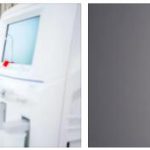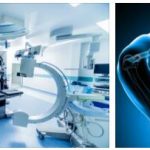According to healthknowing.com, a lipodystrophy of the Berardinelli type is one of the genetically determined lipodystrophies. Fat tissue cannot be formed in this disease. Because lipodystrophy is associated with treatment-resistant diabetes, the prognosis for this condition is not good.
What is Berardinelli type lipodystrophy?
Externally, lipodystrophy of the Berardinelli type is exactly the opposite of obesity. While obesity stores too much fat in the fatty tissue, with this disease the body is not at all able to either form or store fat. It is usually assumed that obesity is a prerequisite for type 2 diabetes.
However, with lipodystrophy of the Berardinelli type, diabetes always occurs, which is even therapy-resistant. In addition, there is a disturbed lipid metabolism, which produces very high blood lipid levels. The prognosis of this disease depends on the consequential damage of diabetes. Lipodystrophy can be both hereditary and acquired.
Most forms of this heterogeneous group of diseases are a consequence of other diseases and are therefore acquired. For example, antiretroviral treatment for HIV can lead to a severe disruption of lipid metabolism with extensive loss of adipose tissue. However, lipodystrophy of the Berardinelli type is genetic.
Although genetically caused lipodystrophies are very rare, they too can be divided into several types. This lipodystrophy is also synonymously referred to as Berardinelli-Seip congenital lipodystrophy (BSCL) or congenital generalized lipodystrophy (CGL). Four types of BSCL have been described so far, all of which are inherited in an autosomal recessive manner.
Causes
Basically, all types of BSCL are caused by gene mutations that encode enzymes for fat synthesis or fat storage. Type 1 is the most common form of BSCL. This is a mutation of the AGPAT2 gene. This gene codes for the enzyme acyltransferase, which is responsible for the transfer of fatty acids as part of an intermediate step in fat synthesis. By disrupting this transmission, fat synthesis is inhibited.
Type 2 BSCL is caused by a genetic change in the BSCL2 gene, which encodes the enzyme seipin. In the endoplasmic reticulum, seipin supports the formation of lipid droplets and their storage within the cell. Types 3 and 4 of BSCL are caused by mutations in genes responsible for the formation and function of the caveolae (small indentations in the plasma membranes).
Caveolae serve to store cholesterol-containing lipids in muscle and fat cells. The disruption of fat synthesis and fat storage initially means that there is no fat tissue in BSCL. Fats and carbohydrates supplied cannot be fully utilized. Insulin is designed to get glucose into cells for energy production and energy storage.
Due to the lack of fat incorporation in fat and muscle cells, fewer receptors for insulin are formed. Despite high insulin concentrations, the blood sugar level cannot be lowered. Therapy-resistant type 2 diabetes develops. At the same time, blood lipids and fatty acids accumulate in the blood because storage in adipose tissue and muscles is not possible.
High blood sugar and blood lipid levels lead to the typical symptoms of the metabolic syndrome. High levels of growth hormone cause gigantism, increased muscle mass and acromegaly.
Symptoms, Ailments & Signs
Berardinelli type lipodystrophy is characterized by a lack of adipose tissue, high blood sugar levels and high blood lipid levels. The deviating values are difficult to influence. Giant growth, thickening of the epidermis, ovarian changes and severe muscle hypertrophy (muscle strengthening) are also observed.
Hypertrophic cardiomyopathy, fatty liver and hormonal disorders can also occur. The hormonal disorders manifest themselves in accelerated growth, premature puberty or muscle hypertrophy. Acromegaly can also occur. The so-called acra (protruding parts of the extremities and the body) such as hands, fingers, feet, toes, ears, chin, nose, penis, chest and others enlarge.
Bone cysts often develop with an increased risk of fracture. In addition, there is usually mental retardation. Furthermore, those affected suffer from a difficult-to-treat metabolic syndrome. The prognosis is largely dependent on the complications of diabetes and the disturbed lipid metabolism.
Diagnosis & disease progression
The diagnosis of Berardinelli-type lipodystrophy can be made based on symptoms, laboratory values, imaging of a rapidly growing skeletal system, and genetic testing.
Complications
In the first place, lipodystrophy of the Berardinelli type leads to increased blood lipid levels and also to an increased blood sugar level. These complaints have a very negative effect on the health of the patient and in most cases lead to a significantly reduced life expectancy. Furthermore, those affected suffer from excessively strong muscles, which is often accompanied by an unusual appearance.
Likewise, lipodystrophy of the Berardinelli type leads to the formation of a fatty liver and thus to various hormonal disorders in the patient. Puberty therefore occurs at an early age, resulting in impaired development in the patient. Furthermore, various parts of the affected person’s body are affected by gigantism, so that there can be various restrictions in the everyday life of the person affected. The patient’s quality of life is significantly reduced by Berardinelli type lipodystrophy.
Parents and relatives often suffer from psychological problems and depression. Mental retardation also usually occurs, so that in most cases the patients are dependent on the help of other people. Since a causal treatment of lipodystrophy of the Berardinelli type is not possible, the patients are dependent on various therapies intended to improve their quality of life. Usually there are no complications.
When should you go to the doctor?
If no formation of fatty tissue is observed with a balanced and good diet, a visit to a doctor is recommended. If there are other abnormalities or irregularities in the connective tissue or the general complexion, the observations should be discussed with a doctor. If the child is growing particularly rapidly in direct comparison to children of the same age, a visit to the doctor is advisable. This also applies to thickening of the upper layer of skin. Irregularities in the female menstrual cycle or behavioral problems should be discussed with a doctor. In the case of hormonal peculiarities, premature puberty and enlarged limbs, a doctor’s visit is advisable.
Optical irregularities of the physique, protruding hands, feet, fingers or toes are indications of an existing disease. A doctor’s visit is necessary so that the cause can be clarified. In the case of optical peculiarities of the ears, the chin, the nose and the chest, the observations should be discussed with a doctor. If irregularities in the bone structure are found, if cysts, swelling and ulcers form or if movement problems occur, a doctor must be consulted. If you are prone to fractures, it is advisable to consult a doctor.
Treatment & Therapy
A causal treatment of lipodystrophy of the Berardinelli type is not possible. So far there are no drugs that would be able to positively influence the disturbances in fat synthesis. Diabetes is difficult to treat. Insulin doses do not help because of the extreme insulin resistance. There is enough insulin. However, this cannot develop any effect because of the missing insulin receptors.
High blood lipid levels are also difficult to lower. Diabetes and high blood lipid levels make a low-fat and low-carbohydrate diet necessary. Of course, constant medical monitoring is necessary in order to keep the consequential damage of diabetes as low as possible. Nevertheless, the prognosis is not good at the moment.
Outlook & Forecast
Patients with lipodystrophy of the Berardinelli type usually receive an unfavorable prognosis from the treating physician. The cause of the disorder cannot and must not be remedied with the current medical possibilities. There is a genetic disposition which, for legal reasons, cannot be changed at the moment. The therapy of those affected is therefore aimed at relieving the existing symptoms and improving the quality of life. The disease is associated with numerous adversities, which represents an enormous burden for the patient and their relatives.
In addition to visual abnormalities, mental impairments are to be expected. Nevertheless, it must be taken into account that the intensity of the gene mutation is always individual. Each patient therefore shows different symptoms, but not all are developed to the same extent. Dealing with the disease is also an important factor in the course of the disease. It can lead to subsequent psychological disorders, which also have a negative effect on development. The earlier treatment is initiated, the better the future prospects are.
Despite all efforts, the patient is lifelong dependent on the help and support of other people. In addition to the cooperation of the relatives, he often needs daily nursing and medical care. Independent coping with everyday life is not possible with this disease.
Prevention
Berardinelli-type lipodystrophy is a genetic disorder that is inherited in an autosomal recessive manner. Therefore, prevention of this disease is not possible. If lipodystrophies run in families, however, human genetic counseling and testing can help to assess the risk for the offspring. If each parent has one copy of the mutated gene, the offspring has a 25 percent chance of developing this form of lipodystrophy.
Aftercare
Because lipodystrophy is a serious condition that cannot heal on its own, follow-up care focuses on managing the condition well, both physically and mentally. In most cases, those affected suffer from diabetes as a result of lipodystrophy, which requires regular check-ups by the doctor treating them.
Due to the mental stress associated with the disease, those affected sometimes develop depression or mental upsets. This can also happen to parents or family members. It can help to check this with a psychologist and weigh up the need for therapy. The further course depends on the individual condition of the person concerned and cannot be generally predicted. In many cases, however, the life expectancy of those affected is significantly reduced by this disease.
You can do that yourself
Lipodystrophy of the Berardinelli type is difficult to treat and is associated with a comparatively poor prognosis. The emotional burden on those affected and their families is correspondingly great. If possible, the patients spend time in care facilities, where social contacts sometimes have a positive effect on the quality of life of those affected. Since the disease is often associated with intellectual disability, adequate care promotes the patient’s condition.
Although drugs against lipodystrophy of the Berardinelli type show little effectiveness, close monitoring by different doctors is necessary. Because diabetes causes consequential damage that needs to be treated properly. It is important for the quality of life of the patients that they actively participate in the medical therapy and take the medicines as prescribed.
In order not to negatively affect the high blood lipid levels, the patients stick to a diet that contains only a few fats and carbohydrates. Advice and support from a nutritionist is essential here, and together with the specialist, he can draw up an individual diet plan for the person concerned. Psychotherapy supports the patient and parents in dealing with the disease.








